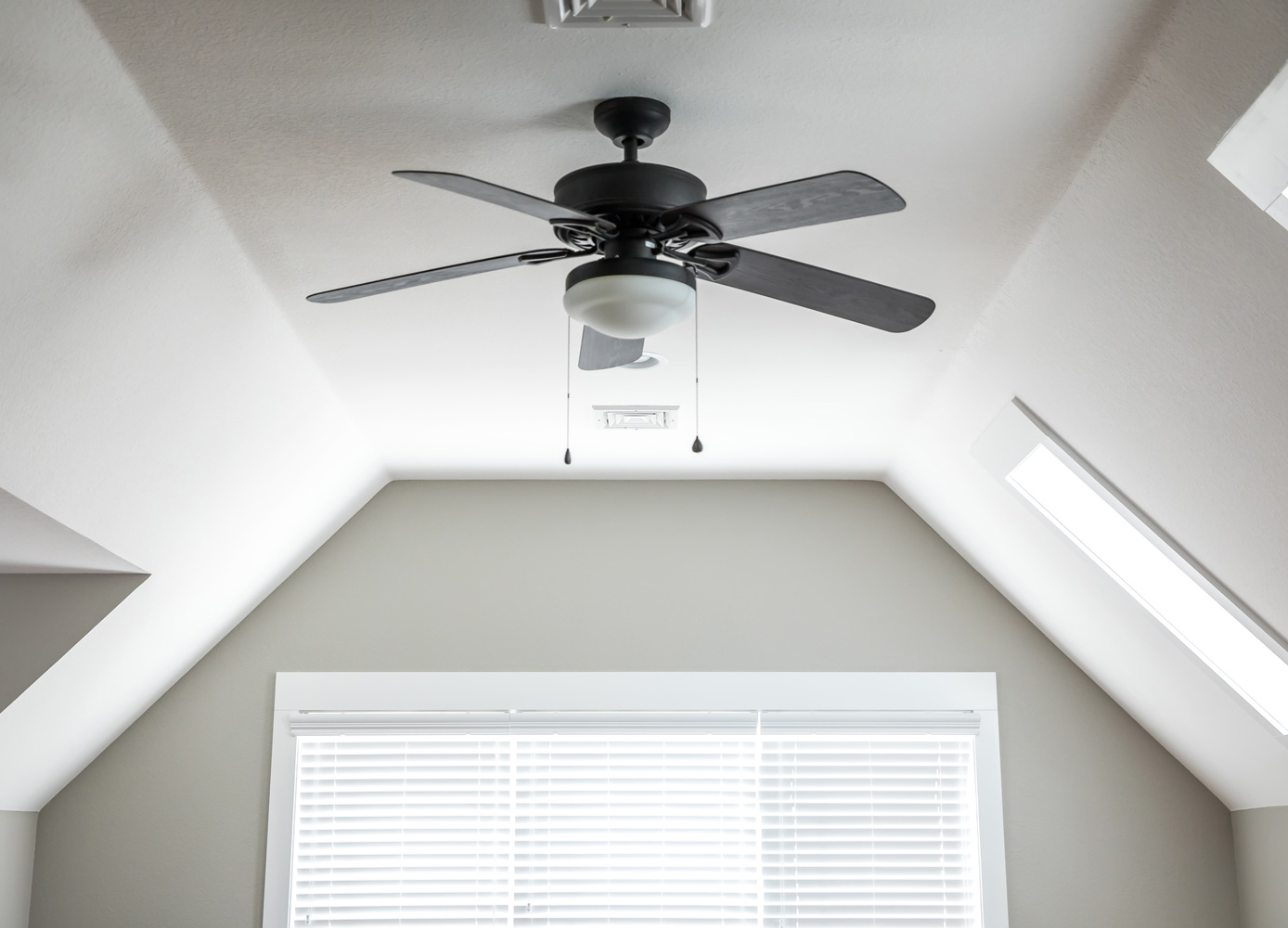If it’s turning the wrong way, it can’t do its job properly
By Caitlin Finlay
One simple springtime chore you might have overlooked is making sure your ceiling fan or fans are revolving in the right direction, and it’s a quick job well worth spending a minute or two on.
Despite the popularity of air conditioning (A/C), ceiling fans remain the go-to for creating a breeze and circulating air within a stale room. They use less energy and are less costly than A/C or heating units and can make a room feel cooler—or warmer—depending on how they’re used.
Most ceiling fans are designed to rotate both clockwise and counterclockwise. Which direction is better depends on the season. Get it right and not only can you make your home more comfortable, but you can save money on energy bills by relying less heavily on your heating and cooling systems. (Almost half a household’s energy use is due to heating and cooling.)
A counterclockwise rotation is perfect for warm summer months because it pushes the air downwards, creating a cooling effect. Experts say that a ceiling fan revolving counterclockwise can lower a room’s temperature by roughly 5℃ (10℉). This temperature reduction means the thermostat can be set a few degrees higher, leading to the A/C system using less energy.
In the cold winter months, you might be tempted to turn a ceiling fan off to avoid the cooling effect, but it’s better to switch the fan to turn clockwise. The clockwise rotation draws warm air upwards and forces that warm air outwards and down, creating a warming effect.
To determine which direction your fan is rotating, stand underneath it and check which way the blades are moving (it may sound obvious, but this is much easier to do if you first set the fan to its slowest speed). To reverse the direction of the ceiling fan, first make sure it is turned off. Once it’s no longer spinning, look for a switch or toggle of some sort below the blades—that switch allows you to change the direction of the fan’s rotation. If your ceiling fan has a remote control, there’s likely a button on the remote to reverse direction. Once the setting is switched, turn the fan back on and enjoy the cooler (or warmer) air.
Photo: iStock/ucpage.


